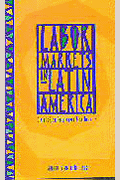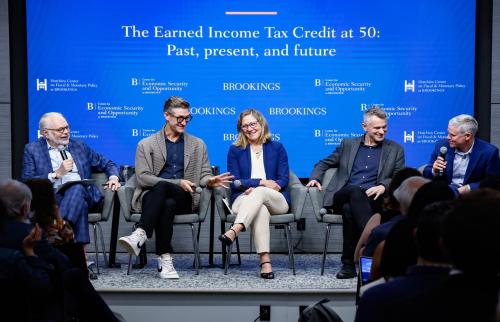Studies in this week’s Hutchins Roundup find firms innovate more when index funds hold a bigger stake in them, work requirements cause fewer people to enroll in SNAP benefits, and more.
Want to receive the Hutchins Roundup as an email? Sign up here to get it in your inbox every Thursday.
Index funds encourage companies to innovate, but in less risky ways
How has the rise in company share ownership by passive institutional investors — typically index funds— affected firms’ level of technological innovation? Yuanchen Yang of the International Monetary Fund finds that firms in which index funds have bigger stakes spend more on research and design and generate more patents, but tend to make contributions to already crowded fields and make incremental innovations rather than pioneer new technologies. The author suggests that when a firm’s shares are included in an index, passive investors are more likely to monitor firms, which might account for the positive effect on R&D. But these investors may also be risk adverse, and structure CEO compensation in ways to lead firms to focus on incremental innovations.
Work requirements lower participation in SNAP
The Supplemental Nutrition Assistance Program (SNAP) provides low-income individuals and families with money for food and groceries. For work-capable adults, the benefits are often contingent on being employed. Using employment and administrative data from Virginia, Kelsey Pukelis at Harvard and co-authors find that SNAP work requirements do not boost employment and have at best moderate effects on earnings for a limited subset of participants. Work requirements do, however, cut the number of otherwise eligible adults in the program by more than 50%, with homeless adults disproportionately screened out. Per dollar of benefit, eliminating the work requirement would likely “transfer more resources to low-income adults than other programs targeting the same population,” the authors conclude.
Firms invest more in scientific research WHEN patent protection is stronger
Stronger patent protection leads firms to conduct more research, conclude Ashish Arora at Duke and co-authors. Using data on public, research-oriented firms between 1990 and 2015, they find that when patent protection is weaker, firms do less follow-on research related to that patent. This effect is more pronounced for small firms, which have fewer resources to translate new ideas into commercial products. This finding suggests that patents and ability to commercialize are strategic substitutes: firms that can’t easily commercialize their ideas need the time afforded by patent protection to facilitate technology licensing, whereas patent protection is less important to firms with the capabilities to commercialize quickly. The authors argue that the strengthening of patent protection over time helps explain why startups have become an increasingly important source of new ideas.
Chart of the week: Job openings surged in April as Americans quit work in record numbers
Quote of the week:
“This is an extraordinary situation we’re in. The economy’s reopening, supported by strong fiscal support and progress on vaccinations. I don’t think this is a typical recession or typical recovery, so it’s really hard to predict exactly the speed at which this happens. Clearly, the recent data show demand is strong and the supply side of the economy needs to catch up and grow at the same speed. So, I think you know we’ll have to see how that plays out over the coming months,” says John Williams, President of the New York Fed.
“[My] view is overall we got very strong demand going forward for the rest of the year, into next year. I expect the economy will adapt to the rapid recovery and we’re going to see very good jobs growth and expect to see really strong GDP growth this year, and seeing good growth next year. So, I think the overall picture is very positive. I think [how quickly] people can be matched with jobs and businesses can reopen and all that can happen — we’ll have to wait and see on that, but I’m pretty optimistic that that’s going to happen. It just may take some time to get all that to come together.”
The Brookings Institution is committed to quality, independence, and impact.
We are supported by a diverse array of funders. In line with our values and policies, each Brookings publication represents the sole views of its author(s).











Commentary
Hutchins Roundup: Index funds, SNAP benefits, and more
June 10, 2021